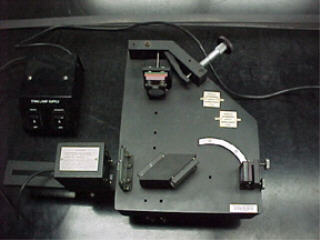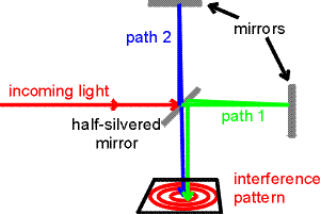
Picture or the setup of the Michelson Interferometer from
http://scienceworld.wolfram.com/physics/MichelsonInterferometer.html
back to top
Applications
Since the Michelson interferometer was
invented, it has become an indispensable tool in scientific applications.
It has been used in the field of
high resolution spectroscopy and atomic length standards. Displacement
can be measured as small as a fraction of the wavelength of visible
light.
It has been refined
to employ light sensitive devices for taking data and use computational methods
for analysis. These advances have rendered Fourier spectroscopy
An imaging Michelson inteferometer uses a telescope
focal plane imaged onto a detector array to record a spectrum for every
object.
Far Infrared Absolute Spectometer (FIRAS) on the COBE
satellite was used to make the most precise measurement of the spectrum
of the cosmic microwave background.
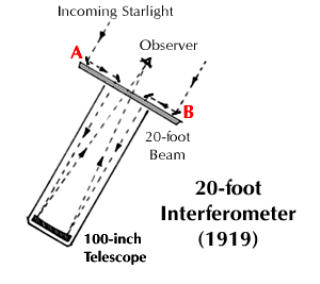
Picture of one of the first interferometers used to measure
star diameter from http://hum.amu.edu.pl/~zbzw/ph/sci/aam.htm
The Sydney University Stellar Interferometry measures
the diameters of several stars and their temperatures. They have used the
Narrabri Stellar Intesity Interferometer to do this.

This picture is from http://www.physics.usyd.edu.au/astron/susi/susi_history.html
Since the invention of the interferometer, there have been
many applications.
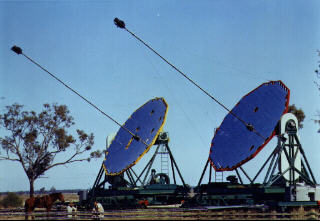
Picture of light collectors on website http://www.physics.usyd.edu.au/astron/susi/susi_history.html
back to top
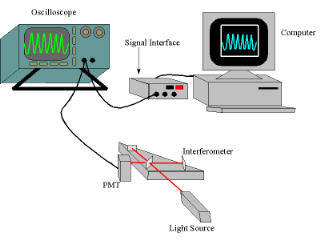
 SETUP
SETUP APPLICATIONS
APPLICATIONS